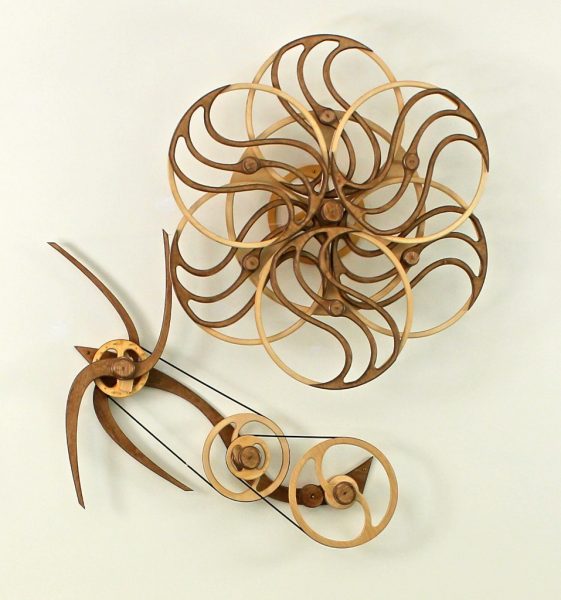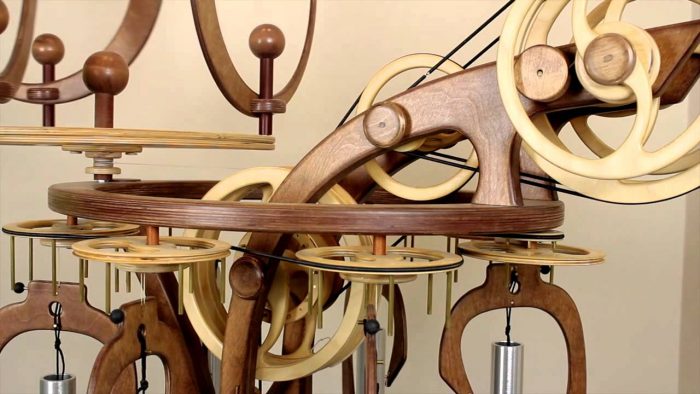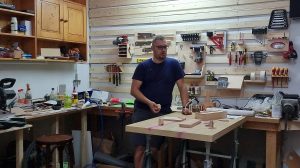Once a sculpture is realized, the viewer can see what the artist wanted to convey. Or at least they can imagine it. But it all happens when the sculpture sits still, allowing itself to be looked at. There is a different kind of sculpture - kinetic sculptures - which, through movement, continually change their appearance, becoming hypnotic images. I too was mesmerized by David C. Roy's art and decided to tell you a little about both the artist and his art.

David C. Roy is an American kinetic artist who has over 150 of these moving sculptures. Each has its own mechanical mode of movement, not powered electrically or otherwise. Most of the works are one-of-a-kind, some made in very small series.

The Connecticut, USA-based artist, the son of an aeronautical engineer, has always been interested in science, movement and inventiveness. A year after graduating from Boston University, a year spent as a programmer for an insurance company, at the suggestion of his future wife, a student at the School of Design, he decided to leave his career as a programmer and become an artist.

His works are not clocks, although they have mechanisms similar to mechanical wall clocks, pendulums: suspended weights, counter-weights, regulators, etc. The mechanisms are used to create the movement, which starts with a hand impulse. In the early works the movement took around 30 minutes. Now David has works that move for more than 40 hours, starting with a simple impulse.

The wood used for the works is birch laminate, basically layers of birch veneer glued together. Roy also focuses on sound not just movement. He's made regulators that are very quiet, or from which you can hear that specific sound of wood rubbing against wood. Sometimes he incorporates sound tubes in his works that are reminiscent of the dangling of bells.

In the beginning, David designed his work from idea and hand-drawn. Over time, building on the experience of his early years, he switched to computer-aided design and animation.

David C. Roy is a well-known and appreciated artist. His work has been the subject of articles in famous publications such as the New York Times, Discover Magazine and the Journal Inquirer. I let you follow the hypnotic movement of his work Infinity - Infinity




































Add comment